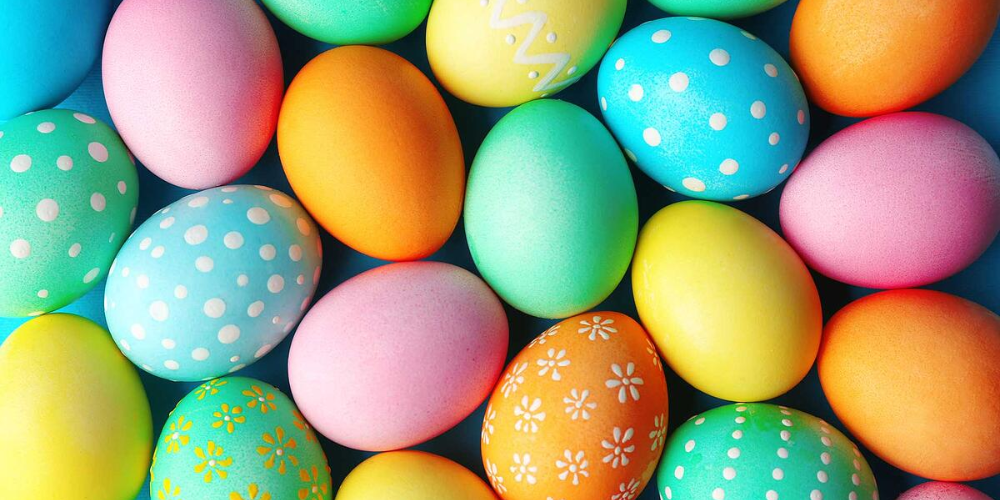These eggs are ideal for adding a playful and festive touch to your yard or house. Feel free to try out numerous combinations until you discover one that works for you. They may be constructed using a variety of tools and methods.
Plastic Easter eggs
A traditional Easter candy and treat hiding place is plastic Easter eggs. They come in a variety of hues, but white and yellow are also options. The thick plastic used to make these plastic eggs makes them simple to customize with paint or crayons. They work excellently as party favors and yard decorations in addition to hiding sweets!
You can do many fun things with this material that will help make your next celebration even more spectacular! The jumbo easter eggs are perfect for Easter celebrations and make great gifts! Each egg is hollow and can be filled with candy, toys, or other treats.
These eggs are also perfect for decorating! You can paint them, add embellishments, or use them as part of an Easter egg hunt.
Party egg
Party eggs are a great way to get kids involved in the Easter celebration. You can use them as party favors, or you can hide them around your yard for everyone to find! If you want to decorate your eggs with paint, make sure that the paint is completely dry before putting on any type of paper mache.
- Plastic Egg
- Paint Brush, Sponge, Sponge Brushes, or a Paint Roller
- Paint Tray, a Paint Tray Liner, and an Egg Carton (Optional)
Stuffed eggs
You must load an egg with sweets or toys to create a filled egg. You don’t need to poke any holes in the plastic if you are utilizing toys that are tiny enough for the egg. Use a hole puncher (or another pointed instrument) to produce a hole for your toy if, however, it is larger than the egg’s aperture.
Using a hot glue gun or super glue, seal the openings of all your filled and decorated eggs to prevent tampering.
No-sew tutu eggs
If you don’t want to sew your eggs together, then use a hot glue gun or super glue to hold them together. Use as many eggs as necessary to make the tutu skirt large enough for your baby or toddler.
Materials:
- Hot glue gun and glue sticks
- Easter egg kits (available at craft stores)
- 1 spool of white tulle (can be found in the wedding aisle at craft stores)
- Scissors or a sharp pair of kitchen shears
Cupcake liner flower eggs
You can make these eggs with regular cupcake liners, but they’re much easier to find in large quantities and cheaper if you buy them online. They come in a variety of colors and patterns, so you can get as creative as you want!
To make the egg round, use either a pencil or marker to trace around the top of your plastic egg mold onto some scrap paper.
Then cut out 5-7 pieces (depending on how many colors/patterns you have) from each color/patterned cupcake liner that will be used in your egg (for example five red halves for one half of an orange patterned egg). Fold these in half so that they resemble an open shell when unfolded.
Place both halves together so that they overlap slightly at the edges (you may need to use tape here if it’s not sticking on its own), then cut through both layers at once with scissors or a craft knife; discard one half while saving another piece like this one until all eggs are finished!
Easter egg hunt
is something that the whole family can enjoy together, especially if you make it an Easter egg hunt theme. This is a fun activity to do on Easter Sunday or Monday when all the kids are out of school for spring break, and it gives them something to look forward to after church. If you have young children who are just learning how to read, write or draw then this is a great way for them to practice their skills while also having some fun doing it!
- Choose a basket, basket or bin to place the plastic Easter eggs in
- Hide the plastic Easter eggs in your yard or house
- Have an Easter egg hunt for children (or yourself) and give prizes out to the winners!
You can make jumbo plastic Easter eggs for your yard or home decor.
If you want to make jumbo plastic Easter eggs for your yard or home decor, all you need is a plastic egg, glue, and paint. Here’s how:
Make sure you have the right materials. For example, if the plastic egg is opaque or translucent, choose an opaque one so that the color of your decorations doesn’t show through. You’ll also want to ensure that any decorations are suitable for outdoor use; many plastics used on indoor items aren’t weatherproof and may fade in sunlight.
Take care with measurements when gluing your decoration inside the egg; it should fit snugly but not be too tight (the glue should allow it to move slightly). One way around this issue is by using a thin layer of hot glue over the top of regular hot glue—it will help secure things without being too thick or hardening before placement is completed! Once everything looks good, let dry overnight before hanging outside!
Conclusion
As you can see, there are many different ways to make jumbo plastic Easter eggs. You can use them for home decor, or even give them as gifts! There are so many possibilities and variations that we could not list them all here. We hope this article helped you find some ideas for your next project.

